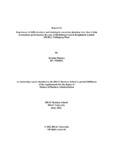| dc.contributor.advisor | Hoque, Dr. Mohammad Enamul | |
| dc.contributor.author | Munira, Sirajum | |
| dc.date.accessioned | 2023-01-17T10:40:38Z | |
| dc.date.available | 2023-01-17T10:40:38Z | |
| dc.date.copyright | 2022 | |
| dc.date.issued | 2022-06 | |
| dc.identifier.other | ID: 19264016 | |
| dc.identifier.uri | http://hdl.handle.net/10361/17751 | |
| dc.description | This internship report is submitted in partial fulfillment of the requirements for the degree of Masters of Business Administration, 2022. | en_US |
| dc.description | Cataloged from PDF version of internship report. | |
| dc.description | Includes bibliographical references (pages 71-72). | |
| dc.description.abstract | Heidelberg Cement Bangladesh Limited (HCBL) is one of the leading cement industries in
Bangladesh representing two branded cements: Ruby Cement and Scan Cement. It started its
journey in Bangladesh in 1998 by establishing ‘floating terminal’ with all the facilities of
packing to onboard in the Chittagong port. The company believes in customer satisfaction
and producing the best quality products for building their reputation.
The internship program is basically a requirement for the BRACU- MBA degree and the
report is done for this purpose. The report focuses on the HRM practices of HCBL (Ruby
Cement), Chittagong Plant as well as on the importance of skill inventories, 9 box grid model
and training in succession planning and how it helps in employee performance, engagement
and development. It also discusses about the risk management done in HCBL. To make this
report, research has been done by a systematic approach with primary and secondary data.
The report shows that training sessions are an important activity of Heidelberg Cement
Bangladesh Limited (HCBL); they focus more on this since they believe in ‘zero harm’, and
‘better employee performance’. Training is a ‘continuous event at Heidelberg Cement
Bangladesh Limited (HCBL). HCBL uses ‘skill inventory assessment form’ to identify and
rate ‘non-management’ full time employees’ (FTE) skills and their training needs if needed.
It also works on ‘gap analysis’ to compare between the ‘available talents’ and the ‘preferable
ones’ for training the employees who needed it. This helps HCBL to identify the potential
candidates for ‘succession planning’ or ‘salary raise’. It also uses ‘the 9 box grid’ as a ‘talent
management tool’ to evaluate performance and potentials of employees.
From the findings of the internship report few recommendations are given to the company
such as increasing workforce to reduce workload and to increase number of vocational
trainings for the workers. | en_US |
| dc.description.statementofresponsibility | Sirajum Munira | |
| dc.format.extent | 78 Pages | |
| dc.language.iso | en | en_US |
| dc.publisher | Brac University | en_US |
| dc.rights | BRAC University Internship reports are protected by copyright. They may be viewed from this source for any purpose, but reproduction or distribution in any format is prohibited without written permission. | |
| dc.subject | Succession Planning | en_US |
| dc.subject | Training and Development | en_US |
| dc.subject | Skill Inventory | en_US |
| dc.subject | 9 Box Grid | en_US |
| dc.subject | Employee Engagement | en_US |
| dc.subject | Employee Performance | en_US |
| dc.subject.lcsh | Employee Performance Appraisal--standards | |
| dc.title | Importance of skills inventory and training in succession planning- how does it help in employee performance: The case of Heidelberg Cement Bangladesh Limited (HCBL), Chittagong Plant | en_US |
| dc.type | Internship report | en_US |
| dc.contributor.department | Brac Business School, Brac University | |
| dc.description.degree | M. Business Administration | |

